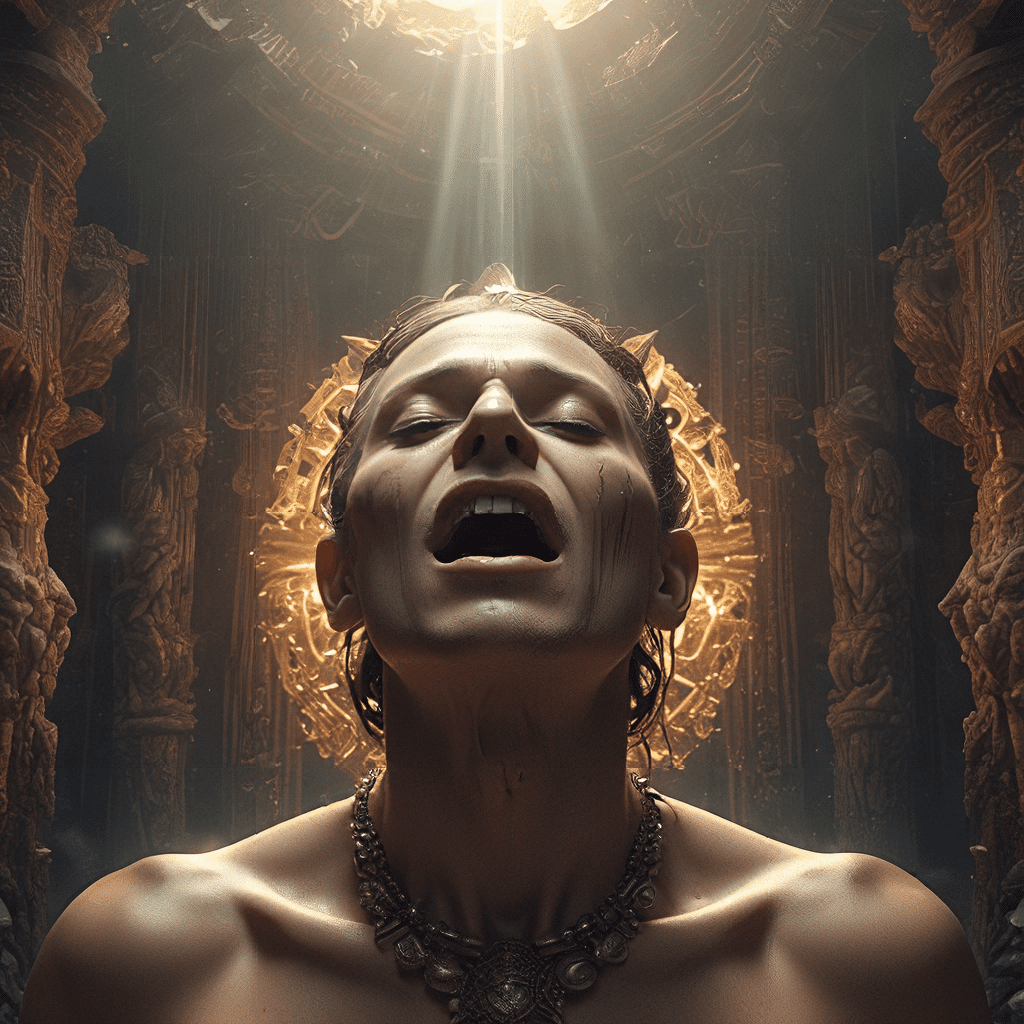The Opening of the Mouth Ceremony: Bringing Life to the Dead
1. Introduction: The Importance of the Afterlife in Ancient Egypt
Ancient Egyptians believed strongly in the afterlife and placed great importance on preparing for it. They believed that a person’s soul, or ka, needed to be provided with everything it needed in the next world. This included food, water, and even clothes. To ensure that the deceased’s ka could enjoy these things in the afterlife, a complex set of rituals was developed, one of the most important being the Opening of the Mouth Ceremony.
2. The Concept of the Ka and Ba
The Egyptians believed that the human soul had two parts: the ka and the ba. The ka was a person’s life-force, their personality and essence. The ba was a kind of soul-double, a spiritual representation of the person that could travel freely between the world of the living and the world of the dead. To achieve immortality, the ka and the ba needed to be reunited in the afterlife.
3. The Purpose of the Opening of the Mouth Ceremony
The Opening of the Mouth Ceremony was designed to bring life back to the deceased in the afterlife. It was believed that, after death, a person’s senses became inactive. The ceremony symbolized the awakening of these senses, allowing the deceased to see, hear, smell, taste, and touch again in the next world. This allowed the deceased’s ka to fully experience the afterlife. The ceremony was performed on both mummies and statues dedicated to the deceased.
4. The Ritual’s Origins and Evolution
The Opening of the Mouth Ceremony originated in the Old Kingdom period (c. 2686-2181 BCE) and continued to be practiced throughout Egyptian history. Its exact form evolved over time, with different elements being added and removed as Egyptian beliefs and practices changed. At first, the ritual was performed only for pharaohs and other high-ranking officials, but eventually it became accessible to people from all walks of life.
5. The Ceremony’s Participants and Roles
The Opening of the Mouth Ceremony was performed by a priest, who wore a special mask and held a ceremonial implement called a chisel. The priest used the chisel to touch the mouth, eyes, ears, nose, and other parts of the deceased’s face or statue. The family of the deceased would also be present, and they would offer prayers and libations. The entire ritual would be conducted in a temple or tomb, usually during a funerary procession.
6. The Tools and Symbols of the Ceremony
The Opening of the Mouth Ceremony featured a number of symbolic tools and objects. The chiseling tool, made of a flint or copper blade, was the main implement and symbolized the act of opening the mouth. The priest also used a small hammer, a copper mirror, and various types of incense. These items were all associated with the resurrection and rebirth of the deceased. The ceremonial implements were often decorated with religious symbols and images of gods associated with the underworld and the afterlife.
7. The Steps of the Opening of the Mouth Ceremony
The Opening of the Mouth Ceremony involved a series of specific steps. The priest would start by purifying the deceased’s body or statue with ritual water and incense. Then, the priest would use the chiseling tool to touch the mouth, eyes, ears, nose, and other parts of the deceased’s face or statue to “open” their senses. The priest then would offer the deceased food and drink, symbolizing the ability to enjoy these things in the afterlife. The ceremony concluded with offerings to the gods and prayers for the deceased’s journey into the afterlife.
8. The Importance of the Ceremony in Different Contexts
The Opening of the Mouth Ceremony was performed in a variety of different contexts. It could be performed as part of a funeral procession, or it could be done separately at a later date. The ceremony was also sometimes performed on statues of the deceased, which were believed to serve as a kind of “double” for the deceased in the afterlife.
9. The Ceremony’s Legacy and its Representation in Art and Literature
The Opening of the Mouth Ceremony is a powerful symbol of the Ancient Egyptian belief in the afterlife and the importance of preparing for it. This ritual is frequently depicted in ancient Egyptian art. Paintings and reliefs on tomb walls show the ceremony in action, depicting the priest with the chiseling tool and the deceased or their statue. They also show the symbolic offerings of food and drink. This ceremony continues to fascinate us today, offering a glimpse into the ancient Egyptians’ complex and fascinating beliefs about death and the afterlife.
10. Conclusion: The Opening of the Mouth Ceremony as a Symbol of Life and Renewal
The Opening of the Mouth Ceremony was a complex and symbolic ritual that reflected the ancient Egyptians’ profound belief in the afterlife. This ceremony served as a way to bring life back to the deceased and to ensure their well-being in the world beyond. The ceremony’s longevity and its inclusion in artwork shows its importance in ancient Egyptian society. It remains a powerful symbol of life, renewal, and the enduring human desire to connect with our loved ones even after death.




